

Cloud Native Austin
April 2020
Today’s Meetup:
KUDO - Kubernetes Operators the Easy Way
Meshery - the service mesh management plane

6:00pm-6:20pm: Welcome, Socializing, and Announcements
6:20pm-8:00pm:
-
Talk 1: Kubernetes Universal Declarative Operator (KUDO)
Michael Taunenbaum and Gerred Dillion, D2iQ
-
Talk 2: Meshery, the service mesh management plane
Lee Calcote, Layer5
Agenda

Thank you to our past sponsors & volunteers
Your Logo Here


Us
Local Organizers
Vendor Neutral
Fosters of Community
Open Source Friendly
You

Who’s Hiring?
Who’s Looking?
Other?
Announcements


Matt Jarvis
Senior Director, Community & Open Source Program Office D2iQ
@mattj_io
Tonight’s Sponsor


Open Source 101 Austin
Upcoming Events
Todd Lewis (@toddlew)
Open Source 101 Austin
Tuesday, May 12

Presentations
#cloudnativeATX

Connect
Participate
Contribute

Join Slack http://slack.layer5.io
Subscribe to newsletter https://layer5.io/subscribe

cloud native and its management
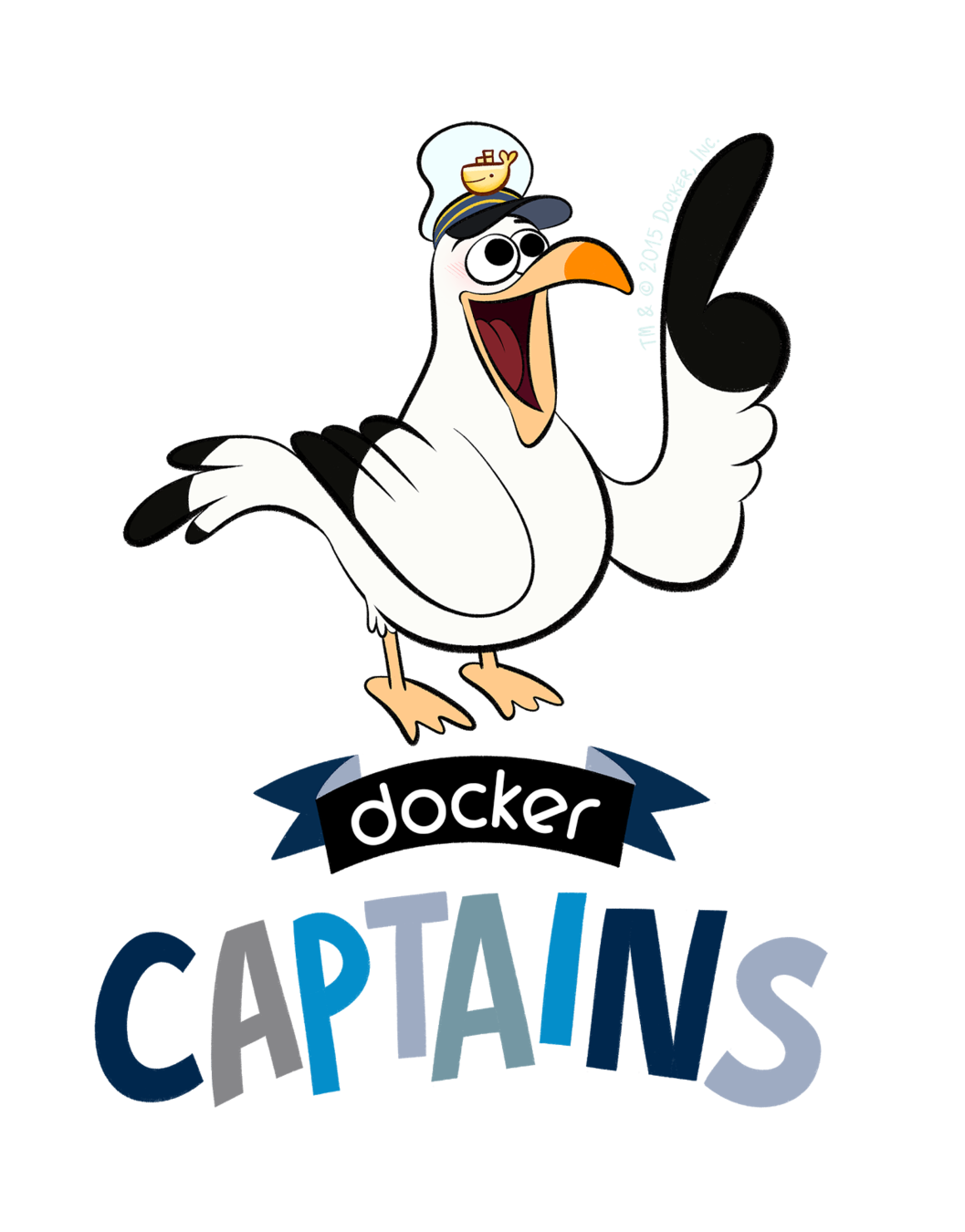



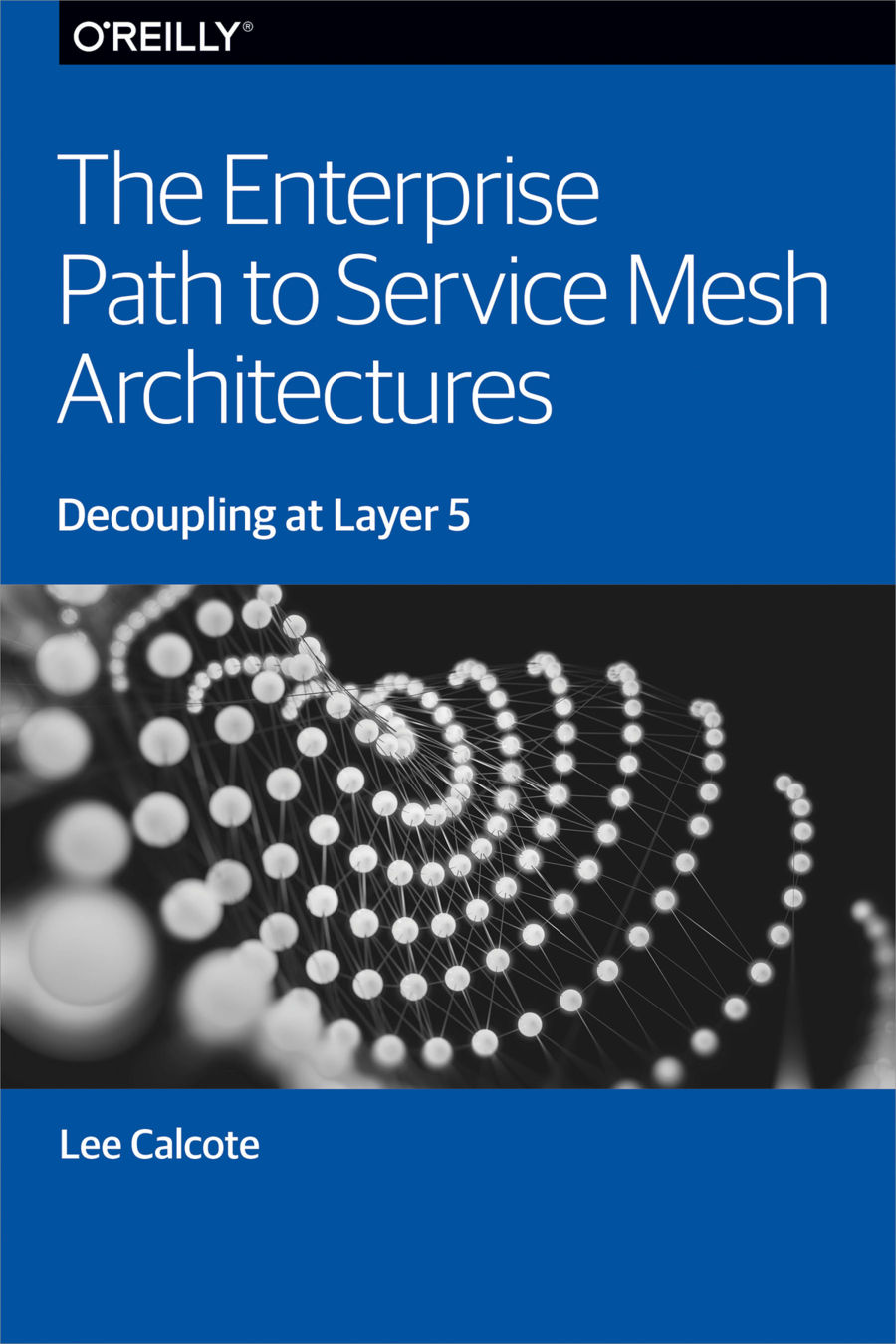
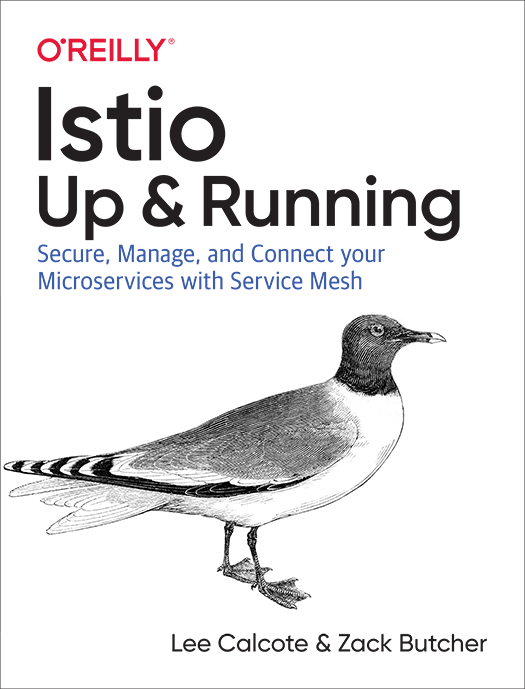
Service Mesh Patterns
Developer Velocity
(aka speed)
Development Process
Application Architecture
Deployment and Packaging
Application Infrastructure
Agile
Waterfall
DevOps
N-Tier
Monolithic
Microservices
Cloud
Containers
Physical Servers
Virtual Servers

Data Center
Hosted
Evolution to Cloud Native
λ
Functions
Serverless
Events
SRE
(Unikernels)

Service Meshes
Stacking up Service Mesh
analogous to the serverless value prop
...but for long-lived services (much the world's workloads)
IaaS
CaaS
PaaS
SaaS
Service Mesh
-
Short-lived
-
Event-driven
-
Long-lived
-
Process-driven
-
Always hot

FaaS
bare metal
AND
virtual machines
AND
containers
AND
unikernels
AND
functions
the future is AND not OR
We hold these truths to be self-evident...
Third step in Cloud Native journey
Meshery is interoperable with each abstraction.
Container
Orchestrator
Mesh
5.5 years
(Jun 2014)
4.5 years
(Jul 2015)
3 years
(Apr 2017)

5.5 years ago
(Jun 2014)
7 years ago
(Mar 2013)
4 years ago
(Feb 2016)
v1.0
Announced



DEV
OPS
Decoupling at Layer 5
where Dev and Ops meet
Problem: too much infrastructure code in services

layer5.io/landscape
It's meshy out there.
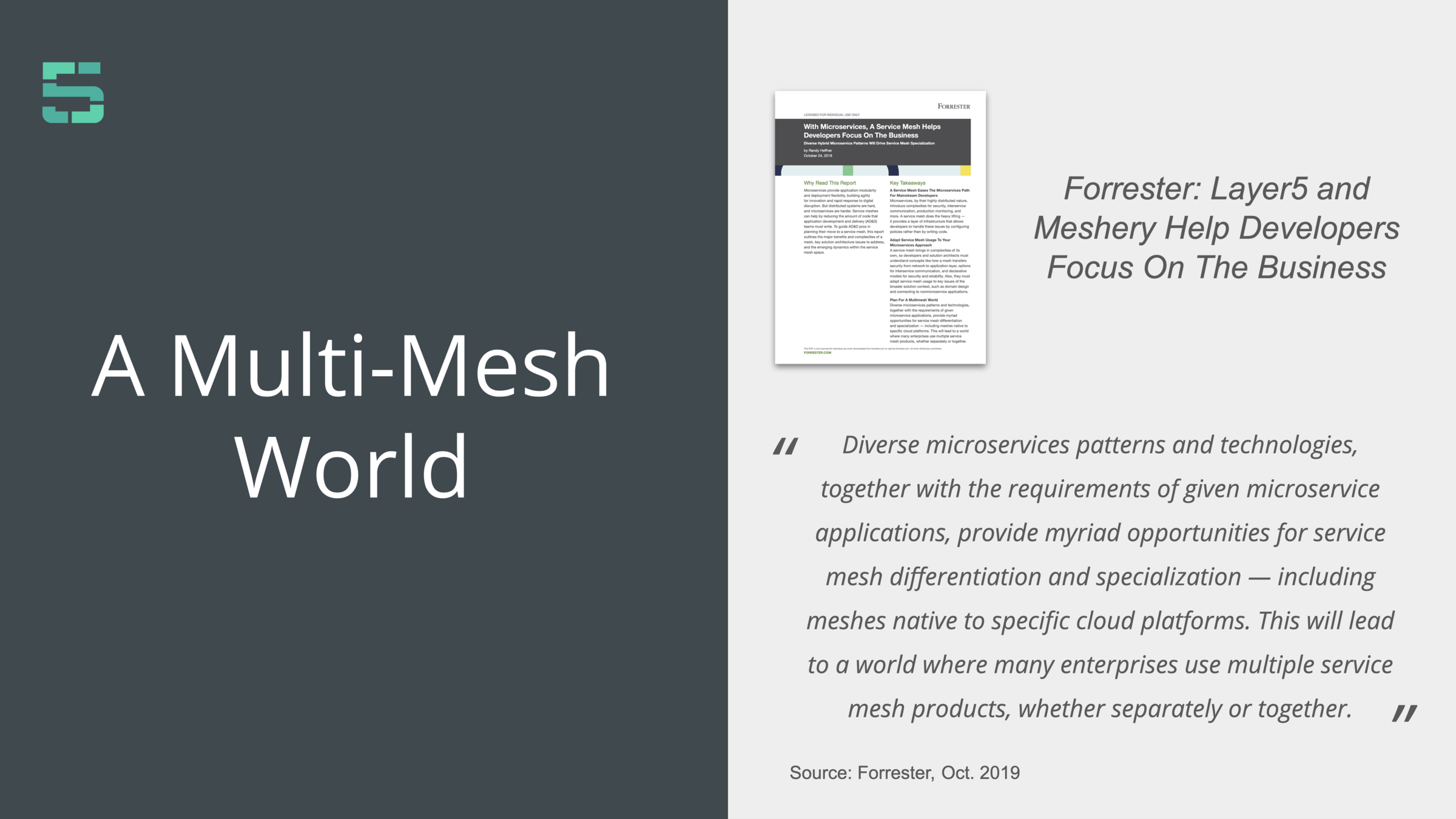
Service mesh abstractions to the rescue
Meshery is interoperable with each abstraction.
Service Mesh Interface
(SMI)
Multi-Vendor Service Mesh Interoperation (Hamlet)
Service Mesh Performance Specification (SMPS)
A standard interface for service meshes on Kubernetes.
A set of API standards for enabling service mesh federation.
A format for describing and capturing service mesh performance.




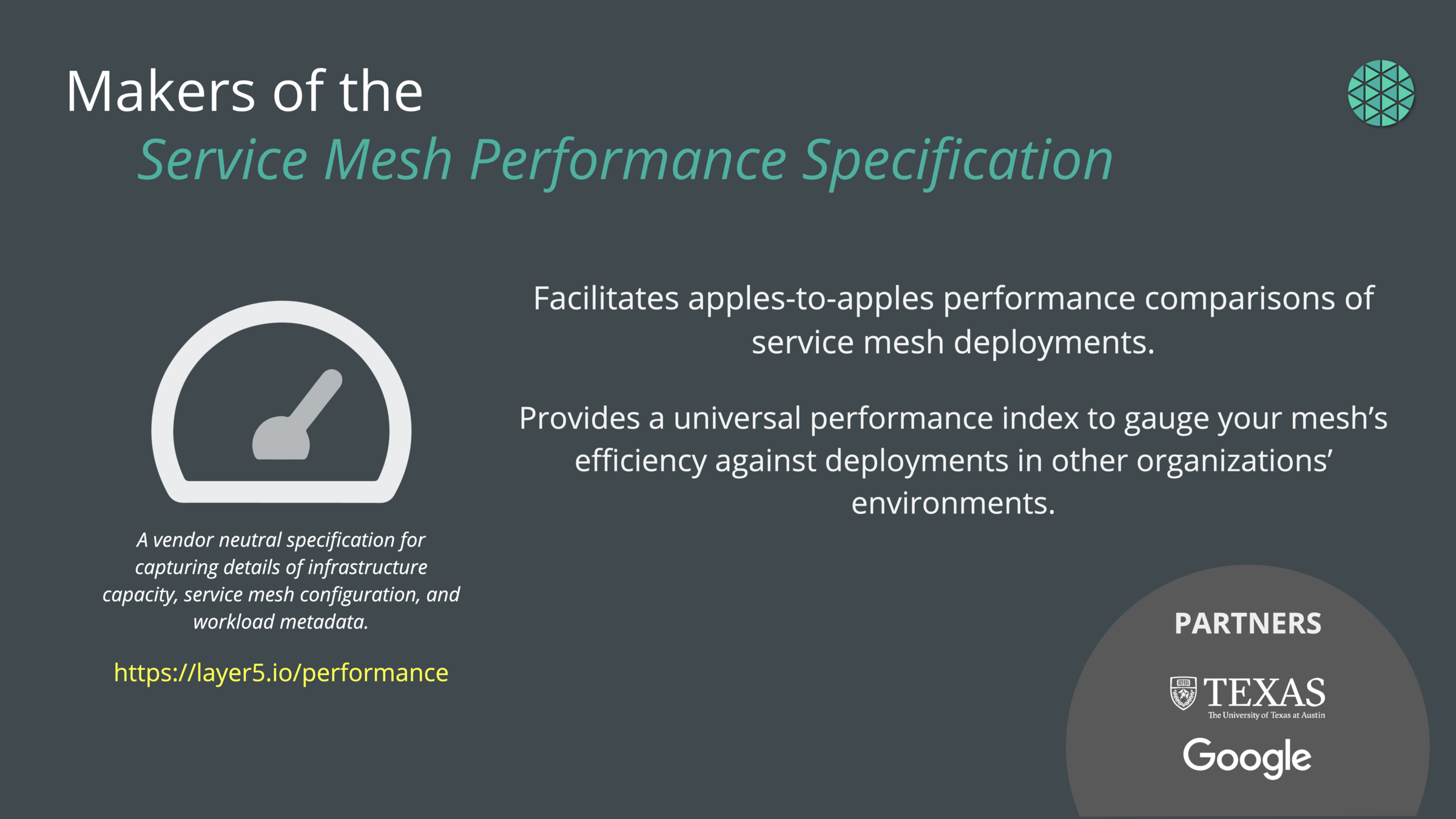
Contrasting Performance





layer5.io/meshery
Pod Memory Usage



Application resource consumption


layer5.io/meshery
Pod CPU Usage



Application resource consumption


layer5.io/meshery
Control Plane Memory

Istio
Linkerd
Consul
layer5.io/meshery
Control Plane CPU

Istio
Linkerd
Consul
Service Mesh Architectures
Service Mesh Architecture
Data Plane
-
Touches every packet/request in the system.
-
Responsible for service discovery, health checking, routing, load balancing, authentication, authorization, and observability.
Ingress Gateway
Egress Gateway

Service Mesh Architecture
No control plane? Not a service mesh.
Control Plane
-
Provides policy, configuration, and platform integration.
-
Takes a set of isolated stateless sidecar proxies and turns them into a service mesh.
-
Does not touch any packets/requests in the data path.
Data Plane
-
Touches every packet/request in the system.
-
Responsible for service discovery, health checking, routing, load balancing, authentication, authorization, and observability.
Ingress Gateway
Egress Gateway

Service Mesh Architecture
Control Plane
Data Plane
-
Touches every packet/request in the system.
-
Responsible for service discovery, health checking, routing, load balancing, authentication, authorization, and observability.
-
Provides policy, configuration, and platform integration.
-
Takes a set of isolated stateless sidecar proxies and turns them into a service mesh.
-
Does not touch any packets/requests in the data path.
You need a management plane.
Ingress Gateway
Management
Plane
-
Provides monitoring, backend system integration, expanded policy and application configuration.
Egress Gateway

Pilot
Citadel
Mixer
Control Plane
Data Plane
istio-system namespace
policy check
Foo Pod
Proxy Sidecar
Service Foo
tls certs
discovery & config
Foo Container
Bar Pod
Proxy Sidecar
Service Bar
Bar Container
Out-of-band telemetry propagation
telemetry
reports
Control flow
application traffic
Application traffic
application namespace
telemetry reports
Istio Architecture

Galley
Ingress Gateway
Egress Gateway

Control Plane
Data Plane
octa-system namespace
policy check
Foo Pod
Proxy
Sidecar
Service Foo
discovery & config
Foo Container
Bar Pod
Service Bar
Bar Container
Out-of-band telemetry propagation
telemetry
reports
Control flow
application traffic
Application traffic
application namespace
telemetry reports
Octarine Architecture

Policy
Engine
Security Engine
Visibility
Engine

+
Proxy
Sidecar

+

Control Plane
Data Plane
linkerd-system namespace
Foo Pod
Proxy Sidecar
Service Foo
Foo Container
Bar Pod
Proxy Sidecar
Service Bar
Bar Container
Out-of-band telemetry propagation
telemetry
scarping
Control flow during request processing
application traffic
Application traffic
application namespace
telemetry scraping
Architecture
destination
Prometheus
Grafana
tap
web
CLI
proxy-api
public-api
Linkerd
proxy-injector

Service Mesh Deployment Models

Client
Edge Cache
Istio Gateway
(envoy)
Cache Generator
Collection of VMs running APIs
service mesh
Istio VirtualService
Istio VirtualService
Istio ServiceEntry
Situation:
-
existing services running on VMs (that have little to no service-to-service traffic).
-
nearly all traffic flows from client to the service and back to client.
Benefits:
-
gain granular traffic control (e.g path rewrites).
-
detailed service monitoring without immediately deploying a thousand sidecars.
Ingress
Out-of-band telemetry propagation
Application traffic
Control flow

Proxy per Node
Service A
Service A
Service A
linkerd
Node (server)
Service A
Service A
Service B
linkerd
Node (server)
Service A
Service A
Service C
linkerd
Node (server)
Advantages:
-
Less (memory) overhead.
-
Simpler distribution of configuration information.
-
primarily physical or virtual server based; good for large monolithic applications.
Disadvantages:
-
Coarse support for encryption of service-to-service communication, instead host-to-host encryption and authentication policies.
-
Blast radius of a proxy failure includes all applications on the node, which is essentially equivalent to losing the node itself.
-
Not a transparent entity, services must be aware of its existence.

layer5.io/books

Advantages:
-
Good starting point for building a brand-new microservices architecture or for migrating from a monolith.
Disadvantages:
-
When the number of services increase, it becomes difficult to manage.

Router "Mesh"

Fabric Model
Advantages:
-
Granular encryption of service-to-service communication.
-
Can be gradually added to an existing cluster without central coordination.
Disadvantages:
-
Lack of central coordination. Difficult to scale operationally.

Ingress or Edge Proxy
Advantages:
-
Works with existing services that can be broken down over time.
Disadvantages:
-
Is missing the benefits of service-to-service visibility and control.
Configuration
Security
Telemetry
Control Plane
Data
Plane
service mesh ns
Foo Pod
Proxy Sidecar
Service Foo
Foo Container
Bar Pod
Proxy Sidecar
Service Bar
Bar Container
Out-of-band telemetry propagation
Control flow
Application traffic
application namespace
Istio v1.0 Multi-Cluster
Ingress Gateway
kube-api
kube-system
Barz Pod
Proxy Sidecar
Service Bar
Baz Container
application namespace
kube-api
kube-system
LOCAL CLUSTER
REMOTE CLUSTER
Egress Gateway
injector
Shared Root CA





Core Infrastructure
Initative
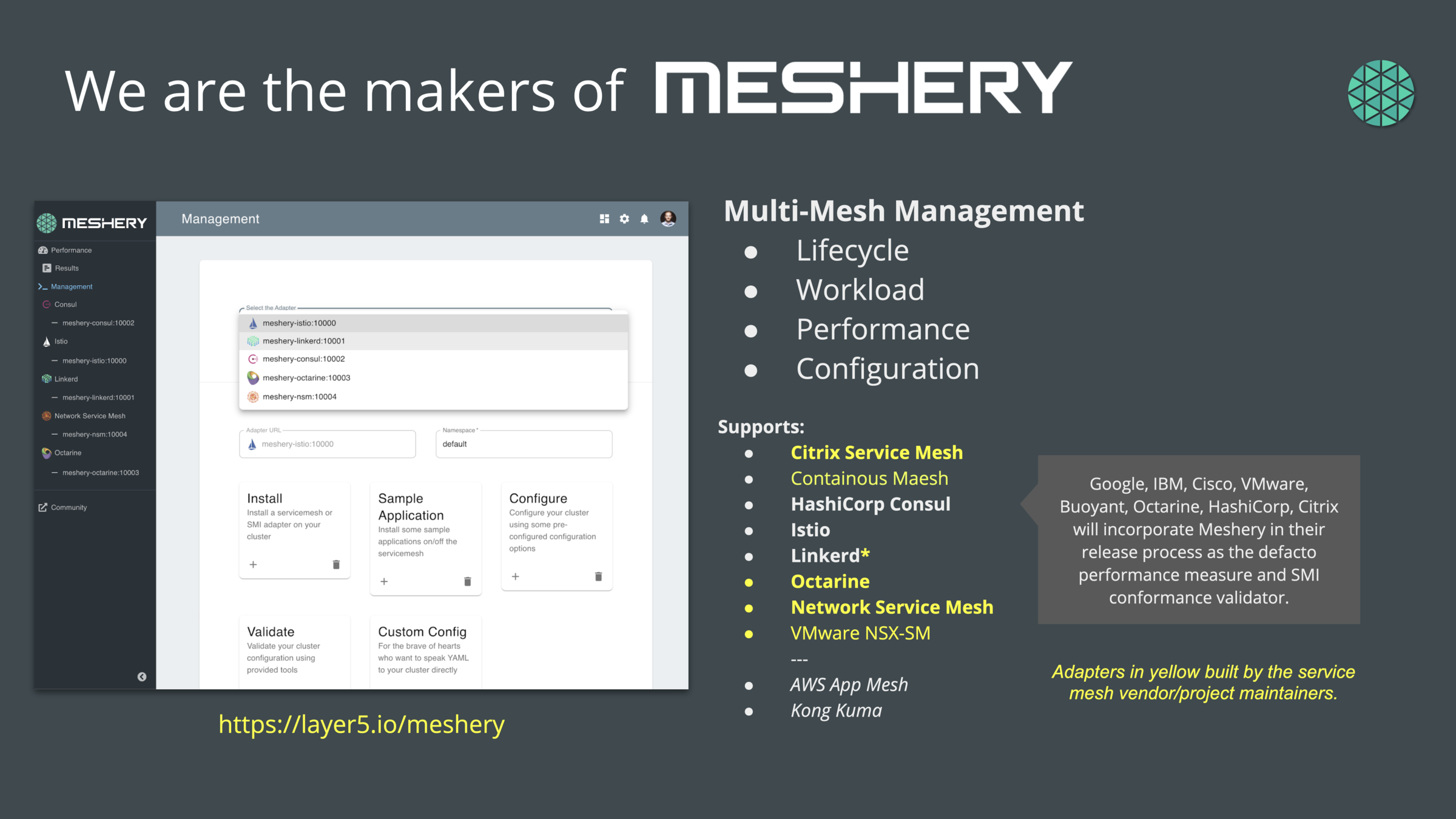

Configuration
Security
Telemetry
Control Plane
Data
Plane
service mesh ns
Foo Pod
Proxy Sidecar
Service Foo
Foo Container
Bar Pod
Proxy Sidecar
Service Bar
Bar Container
Out-of-band telemetry propagation
Control flow
application
traffic
Application traffic
application namespace
Meshery Architecture
Ingress Gateway
Egress Gateway

Management
Plane
meshery
adapter
gRPC
kube-api
kube-system






generated load
http / gRPC traffic
meshery.io
Deploy Management Plane
Management
Plane
Provides expanded governance, backend system integration, multi-mesh, federation, expanded policy, and dynamic application and mesh configuration.
Control Plane
Data Plane
brew tap layer5io/tap
brew install mesheryctl
mesheryctl startInstall Meshery
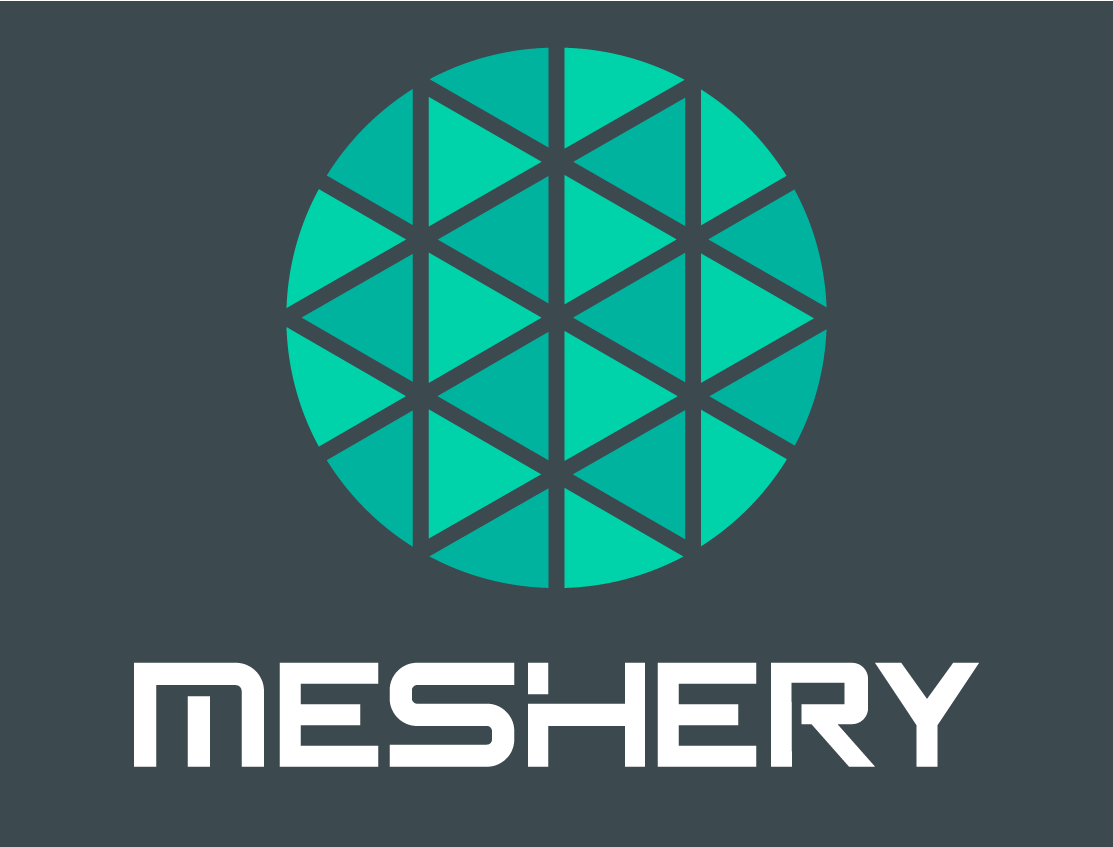
Using brew
Using bash
curl -L https://git.io/meshery | sudo bash - kubectl config view --minify --flatten > config_minikube.yamlIf using minikube:
Lee Calcote
cloud native and its management


layer5.io/subscribe








